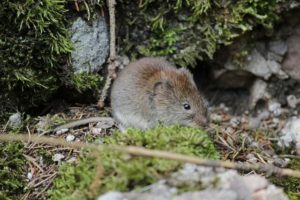Efficient Vole Control Solutions: Handling Vole Pest Issues
Efficient Vole Control Solutions: Handling Vole Pest Issues
Blog Article
Grasping Vole Bug Control: Thorough Insights on Problem Avoidance and Therapy Methods
By acknowledging the subtle indicators of vole infestation early on, we can take aggressive procedures to avoid prevalent damage. In this conversation, we will discover the nuances of vole habits, delve right into the identification of problem indicators, and reveal the most effective avoidance and treatment approaches.
Comprehending Vole Habits
Analyzing the foraging patterns of voles uses beneficial insights into their habits and environment choices. By observing their foraging behavior, researchers can acquire a much better understanding of where voles favor to establish their habitats and the extent of their environmental effect.
Research suggests that voles show discerning feeding routines, choosing seeds, roots, and bulbs. This dietary choice affects their foraging patterns, leading them to locations abundant in plant life and ground cover. In addition, voles are recognized to create elaborate tunnel systems for foraging and nesting purposes, indicating a high level of adaptability to their environments.
Understanding vole behavior is essential for implementing targeted parasite control procedures that disrupt their environment choices and foraging activities (vole lawn damage). By studying their actions, professionals can establish more reliable prevention and treatment approaches to take care of vole invasions

Identifying Indicators of Vole Invasion
Vole infestations can be detected by acknowledging details indications of their existence in a location. One of the most usual indications of a vole problem is the existence of surface area runways. Voles create networks of slim pathways on the ground that are typically around two inches wide. These runways are often located in grassy locations or below compost or ground cover where voles can move openly and browse for food.
An additional essential indication of vole infestation is the existence of tiny burrow openings in the ground. Voles dig shallow burrow systems with numerous entrances and departures. These burrows function as shelter and nesting websites for the voles. Additionally, voles are understood to leave chewed plant stems, roots, and light bulbs near their burrow openings, indicating their feeding activity in the area.
Finding these droppings along runways or near burrow openings can confirm a vole infestation. By being watchful for these signs, home proprietors can immediately attend to vole problems and stop additional damages.
Carrying Out Positive Prevention Steps

Moreover, employing natural vole deterrents like castor oil-based repellents or killer urine can function as reliable safety nets. It is also a good idea to consistently check exterior spaces for any type of indicators of vole activity, such as runways or tunnel openings, to resolve potential invasions without delay. vole yard damage. By adopting these proactive prevention approaches, residential or commercial property proprietors can significantly decrease the probability of vole damages and keep the health and aesthetic appeals of their landscapes
Reliable Therapy Approaches
Incorporating targeted trapping methods and using authorized rodenticides are necessary parts of reliable therapy approaches for taking care of vole problems. Capturing can be a reliable means to reduce vole populaces, specifically when positioned purposefully in their energetic runways. Break traps and live traps can both be efficient, with the latter allowing for the capture and relocation of voles. When using rodenticides, it is essential to follow safety standards to stop injury to non-target pets and pet dogs. Location rodenticides in safe bait stations to minimize threats to unplanned targets. In addition, habitat modification, such as reducing ground cover and eliminating resources of food, can aid prevent voles from infesting an area. Regular surveillance and upkeep are likewise key facets of effective treatment strategies to make certain that vole populaces are kept under control. By combining capturing, rodenticides, environment modification, and regular surveillance, efficient vole pest control can be attained.
Surveillance and Maintenance Tips
Regular tracking enables for the very early discovery of vole activity, enabling timely treatment prior to infestations intensify. To efficiently monitor vole populations, strategically placed traps can be used in vole runways or near burrow entrances.
Furthermore, preserving a well-kept read the article and neat landscape is crucial in vole avoidance. Clearing up away particles, such as heaps of timber or thick plant life, removes possible vole environments. Consistently trimming and cutting lawns vegetation helps see this here in reducing vole hiding spots and minimizes their access to food resources.
Moreover, continuous maintenance of physical barriers, such as fences or cord mesh, is crucial to stop vole invasion. Examining and repairing any problems to these frameworks guarantees that vole control remains reliable in securing residential or commercial properties from infestations. By including these tracking and maintenance techniques into a comprehensive vole parasite control plan, people can successfully handle vole populaces and secure their homes from damage.
Final Thought
To conclude, understanding vole insect control calls for a solid understanding of vole actions, the capability to recognize indications of problem, carrying out proactive avoidance actions, efficient therapy techniques, and regular tracking and upkeep. By taking an extensive strategy to vole control, individuals can successfully manage and stop problems, ultimately securing their property and surrounding setting from damages caused by these tiny rats.
In this discussion, we will discover the subtleties of vole behavior, dive right into the identification of invasion indications, and reveal the most efficient prevention and therapy techniques.Integrating targeted capturing techniques and utilizing approved rodenticides are essential elements of reliable therapy methods for taking care of vole problems. To properly keep track of vole populations, tactically put catches can be made use of in vole paths or near burrow entries. Examining and repairing any type of damages to these structures guarantees that vole control remains effective in protecting properties from infestations. By incorporating these monitoring and upkeep techniques right into a thorough vole parasite control strategy, people can successfully click to read more handle vole populations and safeguard their homes from damage.
Report this page